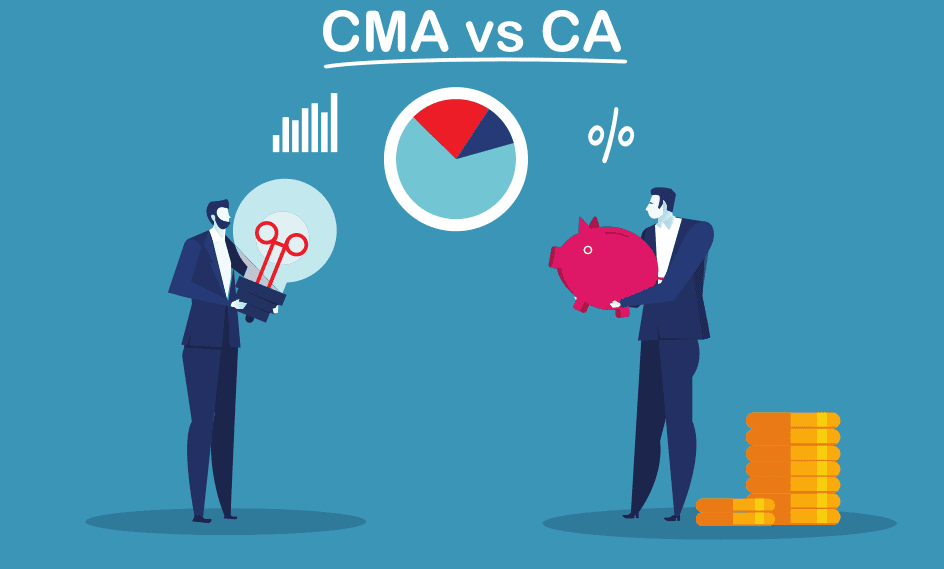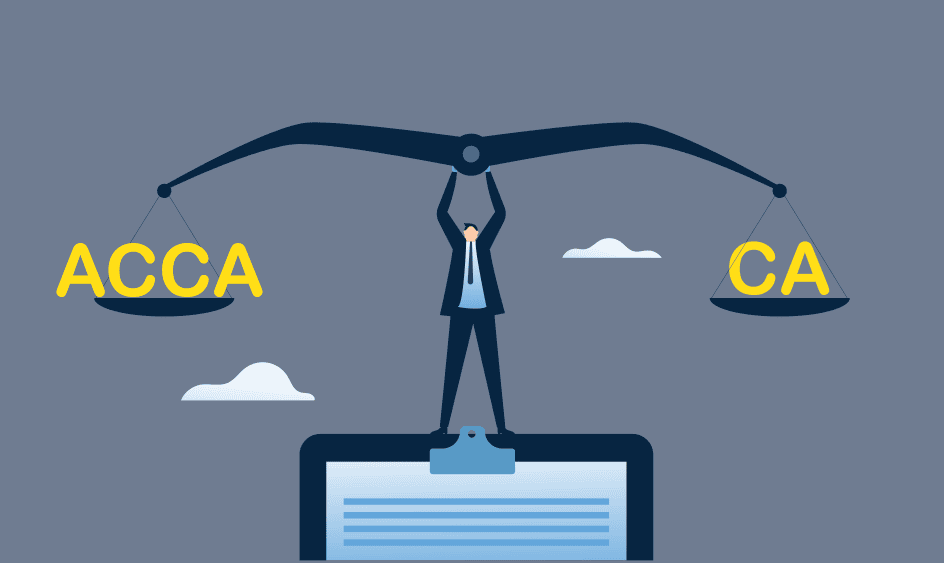Every student must choose their professional path wisely because it affects their future. The 12th-grade commerce students have a wide range of employment options, so choosing a career is especially crucial. Two key qualifications that frequently come into focus when navigating the accounting and finance fields are Cost Management Accountant (CMA) and Chartered Accountant (CA).
While each of these titles is highly esteemed and potentially financially rewarding, they cover a variety of functions and target distinct segments of the banking sector. CA specializes in corporate law, taxation, auditing, and financial accounting. In contrast, the CMA concentrates on managerial accounting with an emphasis on financial forecasting, planning, cost control, and strategic decision-making. However, the growing popularity and sophistication of these courses have made it more difficult for students to choose the right one; thus, it’s important to find the difference between CA and CMA.
Understanding the distinctions between CMA and CA is essential since it will help prospective accountants and other financial experts make informed decisions about their careers. Now, let’s do CMA vs CA.
About CMA course
A career in cost and management accounting can be achieved through the CMA course, which is a professional certification. Within a company or organization, CMA is responsible for overseeing, assigning, and managing finances. In addition, the four knowledge pillars of management, strategy, regulatory framework, and financial reporting are the focus of the CMA. Because of this, participants will be more equipped to make decisions on cost information, which will improve cost management and output profitability. Cost accountants, budget planners, and financial officers are among the positions that graduates of the program can apply for. The ability to contribute to business organizations’ cost-cutting initiatives is given to Cost Management Accountant.
About CA Course
The CA program is regarded as one of the most prestigious professional courses to advance and perfect knowledge in the relevant domains. The CA course provides a thorough understanding of financial reporting, audits, and taxes. It is intended for those who are aspiring to become accountants and other finance-related professionals. Generally speaking, the CAs assist any business with its financial demands. Stated differently, they support and counsel investors and stockholders regarding their financial needs and expertise. Both domestically and internationally, the CA qualification is recognized as a mark of professionalism and expertise for improving proficiency.
Difference between CMA and CA course
The CMA and CA are the two most prestigious certifications in the banking industry, yet they differ greatly regarding training, professional prospects, and services provided. Candidates can review the following infographic to learn the fundamentals of CMA vs CA.

How to Become a CA?
Even though the CA exam may seem difficult, it is possible to pass it with the right planning, preparation, and direction. The steps to become a chartered accountant are listed below.
- There are two ways to become a CA after 12th and after graduation.
- 12th-passed students will have to start with the Foundation course, and graduates can skip the foundation course and can directly start from the intermediate course.
- Clear all three levels of exams and finish ICITSS training.
- Undergo 2 years of articleship.
How to Become CMA
Similar to CA, CMA has two routes, after the 12th and after graduation.
- After passing the 12th, students can register for the Foundation course.
- Graduates can register for the direct entry route, where they can take intermediate courses.
- 1.5 years of mandatory practical training students have to undergo before applying for the Final exam.
- Another 1.5 years in total and 3 years of practical training are required to become a member of the institute.
Conclusion
The difference between CA and CMA is based on the person’s goals for their career, interests, and abilities. With a variety of benefits, these courses offer a wide range of job opportunities in accounting, finance, and business.
The CA is a more demanding degree that focuses mostly on accounting and finance. In addition, it offers global recognition, financial possibilities, and a greater range of career opportunities, such as consulting, auditing, tax preparation, and financial management. The CMA offers specialized knowledge and skills in cost management, planning, and decision-making with a primary focus on cost and management accounting. The CMA course is available to students who wish to focus on cost and management accounting.
When choosing between CA and CMA, students should consider their interests, skills, and career objectives. It is essential to investigate the curricula, employment opportunities, and necessary skills of both courses to determine which one best fits their goals.
We have a separate blog for CA and CMA which I request you to check for detailed information. If you liked CMA vs CA, then there are other comparison articles we recommend that you may like.




